 Fountaine Pajot Catamarans was launched in 1976 near La Rochelle, France.
Fountaine Pajot Catamarans was launched in 1976 near La Rochelle, France.
The founders were Jean-François Fountaine, an Olympic sailor for France, Yves Pajot, Daniel Givon and Rémi Tristan.
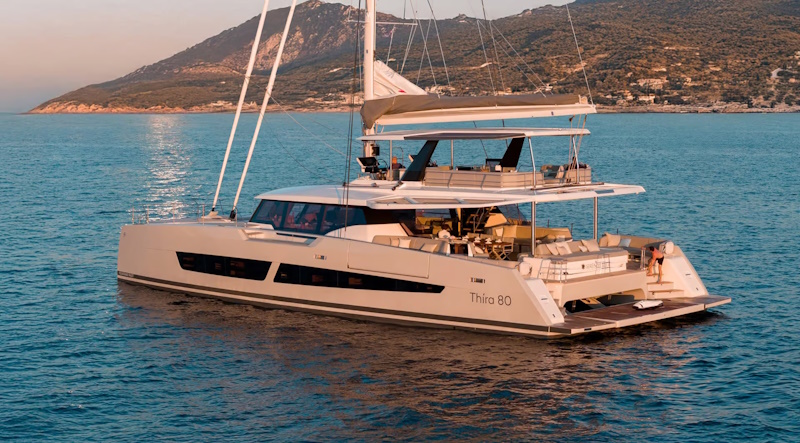 Thira 80
Thira 80
Fast forward to today, and this yard is one of the most successful multihull manufacturers in the world alongside Leopard Catamarans, Bali and Lagoon.
They began with racing monohulls, but soon found their passion designing and manufacturing catamarans. The “Royale” trimaran and “Charente Maritime”, a racing catamaran were first out of the shed: the latter took the honours in her first transoceanic races.
A Timeline of Fountaine Pajot Catamarans
Ordered by date of launch.
Louisiane 37 (1983-1988)
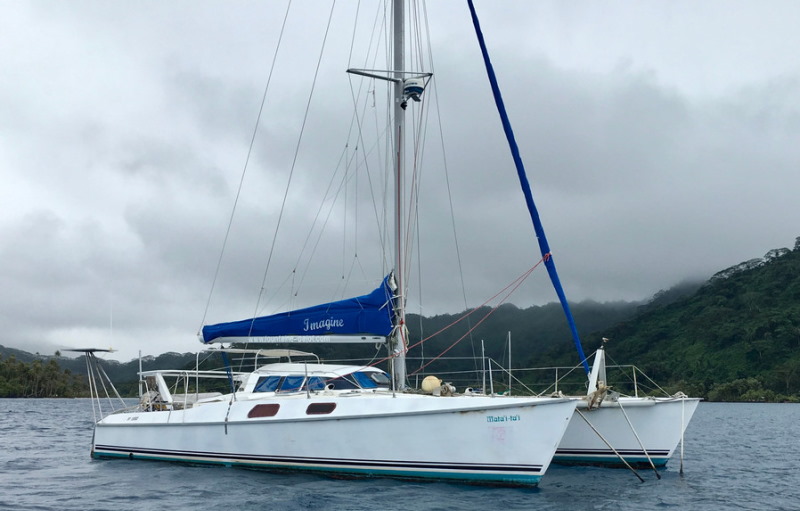
Fountaine Pajot Catamaran’s first production multihull.
Casamance 43 (1985)
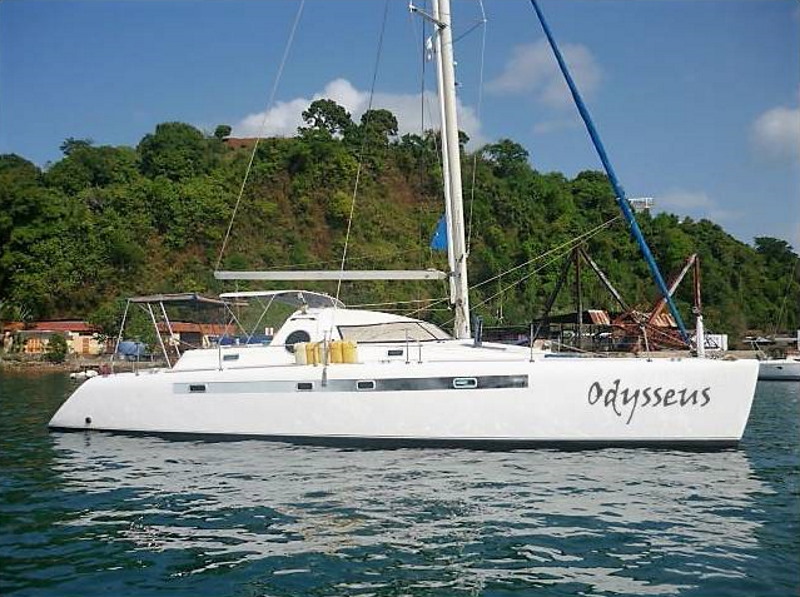
Fountaine Pajot launched the Casamance 43 in 1985, the first of a new generation building on the experience of the Louisiane. The pivoting centreboards were replaced with fixed fins. They designed more volume in the hulls and nacelle which allowed more space for the interior.
Maldives 32 (1988)
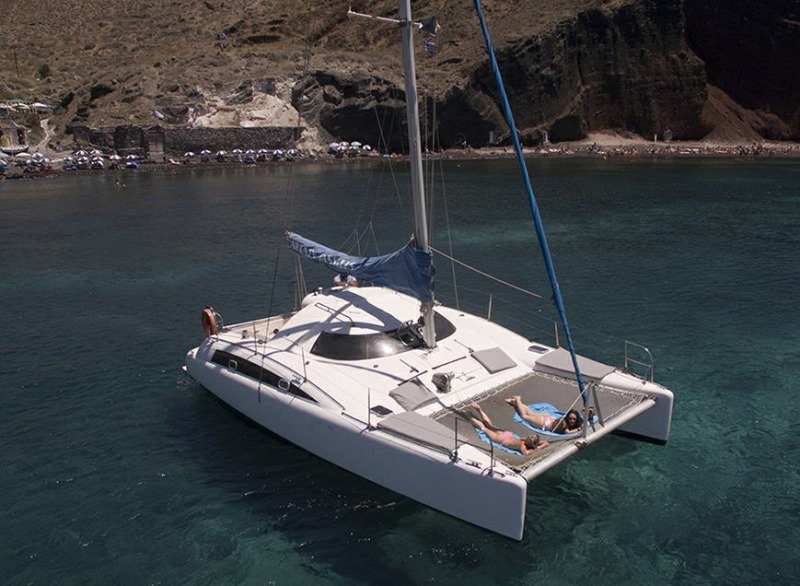
The trend at the time was to minimise windage at the expense of headroom in the saloon like the early Outremers. The Maldives scores highly on that one!
Fidji 39 (1988)
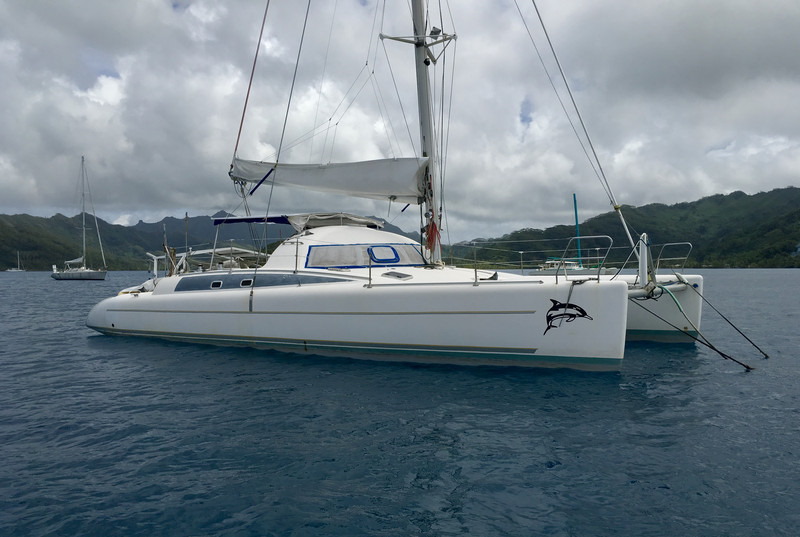
These early Fountaine Pajots look like space ships. The priority was to minimise the windage from the coach-roof at the time.
Antigua 37 (1990)
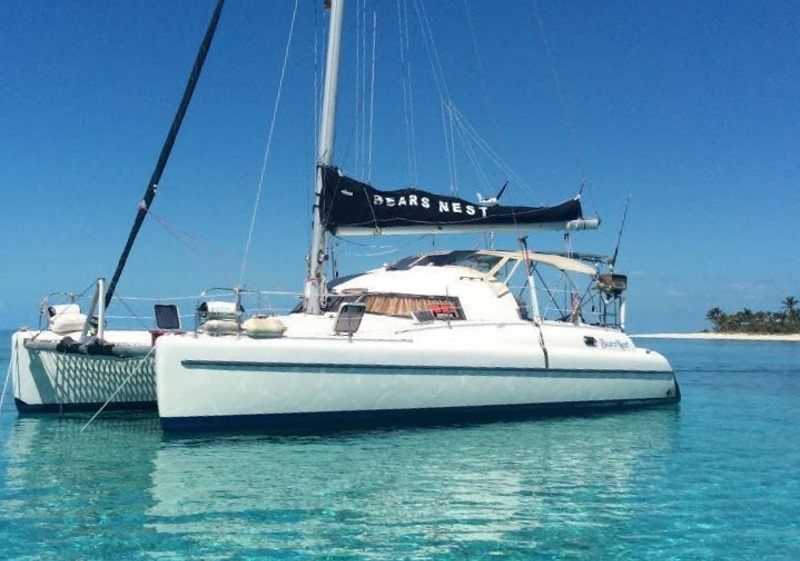
Photo: Bears Nest.
The Antigua 37 is the predessessor to the ATHENA 38 (see below)
Designed by Joubert-Nivelt, she has a draft of just 1.02m and weighs 4.5 T light.
She sails well if you keep the weight off, similar looking to the Fidji 39. Fountaine Pajot actually manufactured both models at the same time for a while.
We forgot to include the Antigua when we first wrote this article. Thanks to Ben Kaminsky for highlighting!
Marquises 53 (1991)
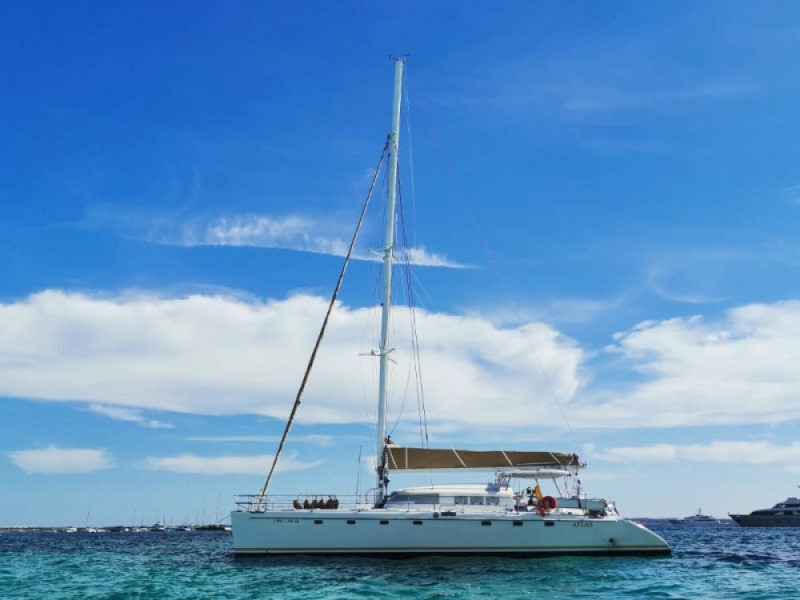
Launch of their first 50 footer, designed by Jean Berret and Olivier Racoupeau
Venezia 42 (1992)
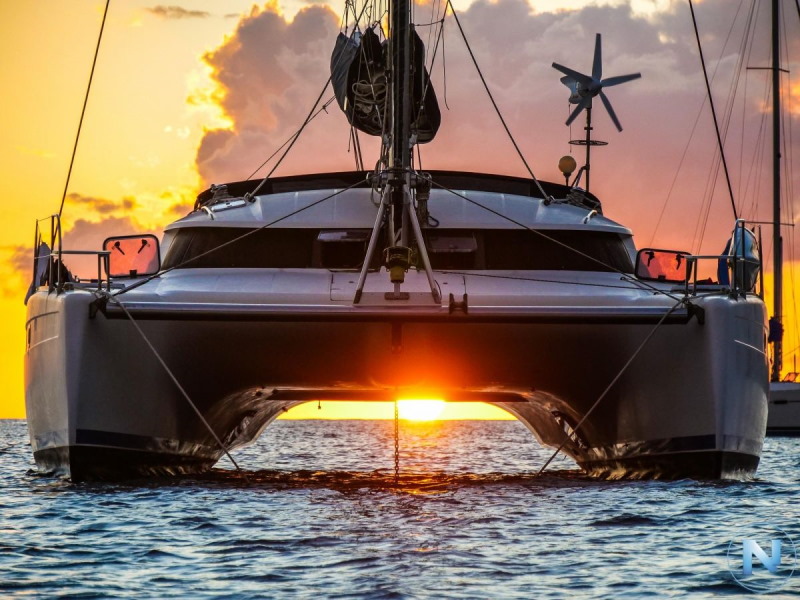
Photo:@nautimages, nautimages@gmail.com
This famous 40 footer was launched in 1992 and set the styling going forward.
Bahia 46 (1993)
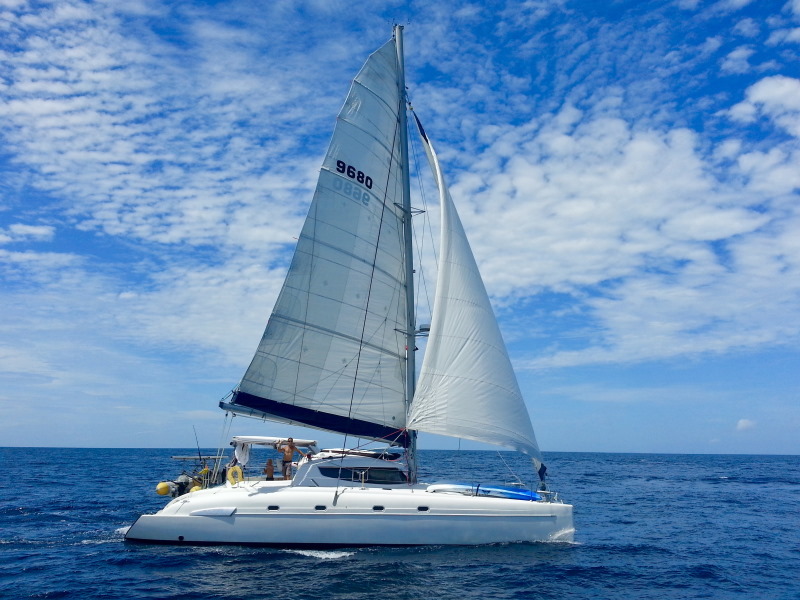
With a generous sail plan, the Bahia is nippy. Owners love the bimini, the dinghy davits and her fine sculpted lines. A great cruising cat.
Tobago 35 (1993)
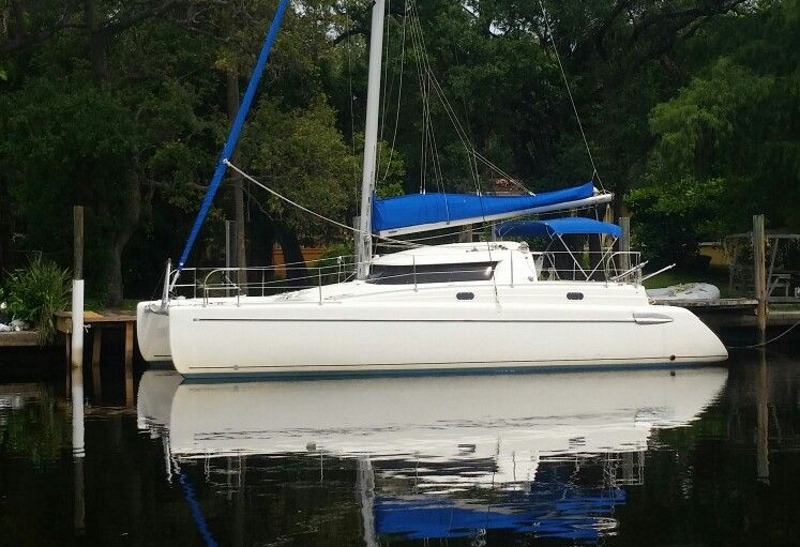
A very popular cat on the second hand market, the Tobago can make 7 -9 knots easily on a reach in a 15 knot breeze. There are less than 100 of them sailing around though…. Don’t overload her.
Athena 38 (1993)
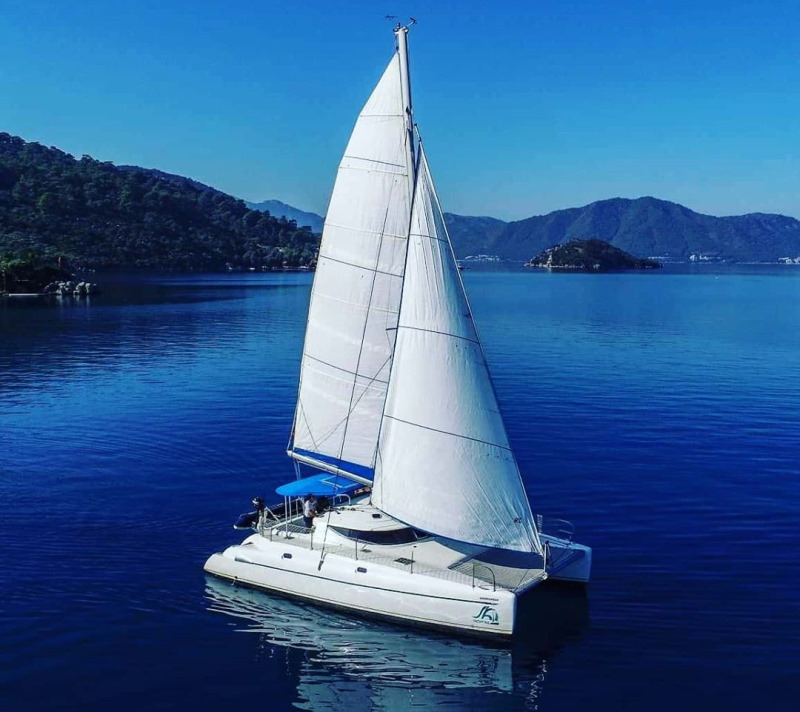
Relatively light, (5.5T light displ.), with fine hulls, the Athena also sails well as long as you don’t add on too much weight. Fountaine Pajot built these from 1995 to 2005, so you should find some good examples on the second hand market. Expect to pay between €100k – 150k.
Marquises 56 (1993)

Easy to sail shorthanded with her self tacking jib and single bulkhead helm station. They are pretty rare on the market, a good sea-worthy boat
Belize 43 (2000)
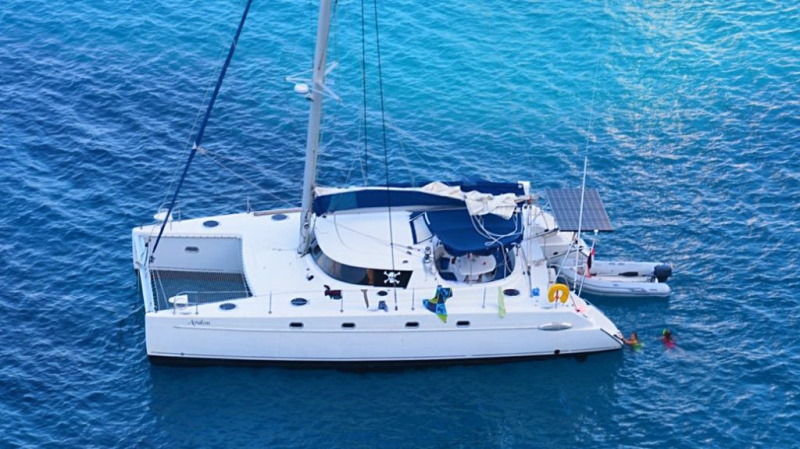
The Belize replaced the Vénézia 42 and in many ways this model hit the sweet spot. They were very successful in the charter market. This is no racing cat, but she is comfortable, efficient and well suited to long ocean crossings. Light ship displacement is only 8.5T.
This model continues to be popular on the second hand market: more than 200 of these popular Joubert/Nivelt designs were built.
A well designed yacht that comes in the “Maestro” layout with an owner suite to starboard, or with four cabins and two heads.
The headroom can be an issue for a tall cook in the galley. This was one of the last models to be built in foam and not balsa.
Price: around 200-250k depending on the condition.
Lavezzi 40 (2003)
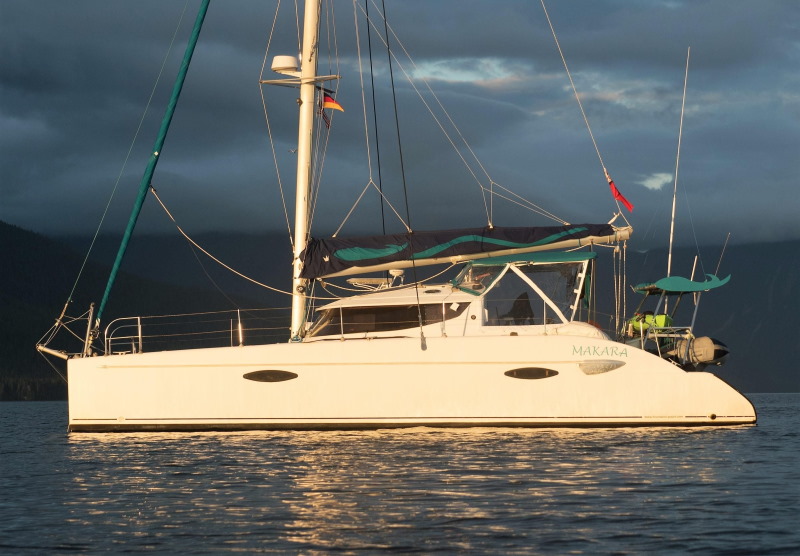
Another very popular model in the charter fleets, the Lavezzi 40 was the first Fountaine Pajot boat to be built using a resin infusion process. She’s easy to handle but could do with more stowage space.
Eleuthera 60 (2004)
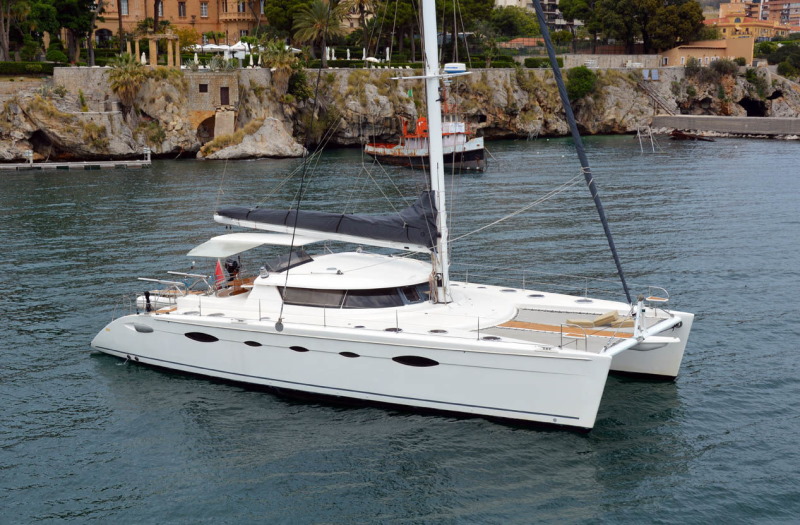
The one time flagship of the Fountaine Pajot range, the Eleuthera was designed by Berret/Racoupeau and looks more muscly than earlier Joubert/Nivelt designs. Oval hull ports, round skylights, a large cockpit , and a big dinner table are all trademarks of the newer look.
She’s a good looking cat.
Mahe 36 (2006)
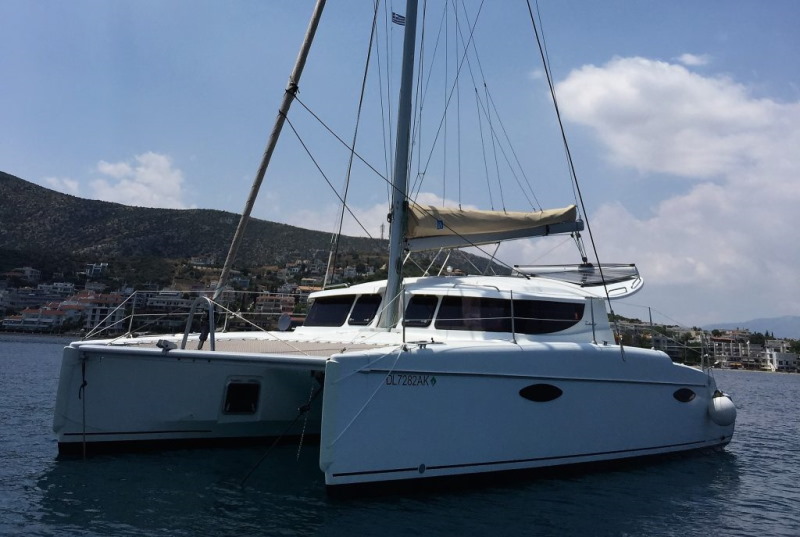
This was the baby in the range in the late noughties. The later upgrade, the Evolution, was one of the first to sport the full bimini with the moulded helm seat which at the time was a revolutionary design feature. Construction is resin-infused fiberglass over a foam core which makes for a strong boat.
Orana 44 (2008)
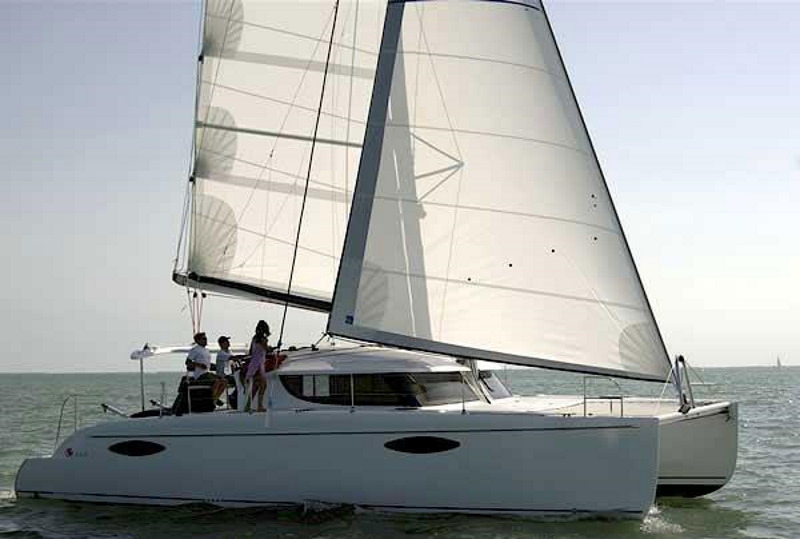
The Fountaine Pajot Orana 44 is a clever evolution from the yard’s earlier catamarans with the new hardtop, helm station, spacious interior, and decent sailing qualities.
Salina 48 (2008)
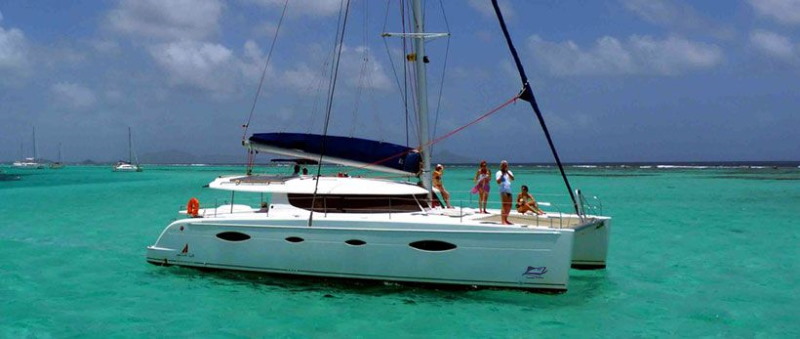
The Salina 48 completed the renewal of the Fountaine Pajot range that was started with the Lavezzi. A capable offshore catamaran: stable, comfortable, safe and spacious. 4 years later, like much of the range, they upgraded the design to the Saline 48 Evolution. Owners love the sunbathing deck aft.
Galathea 65 (2009)
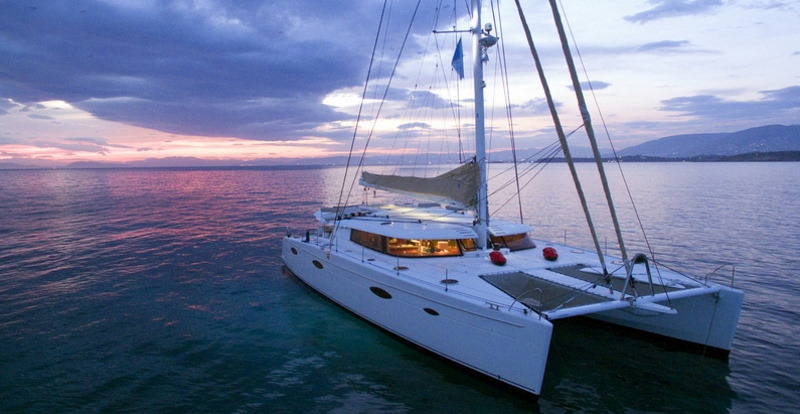
Sleek and fast despite its size, this is a very pretty 65 footer. This flagship has a huge amount of living space and makes the more modern flagship designs look a little dumpy.
Lipari 41 (2009)
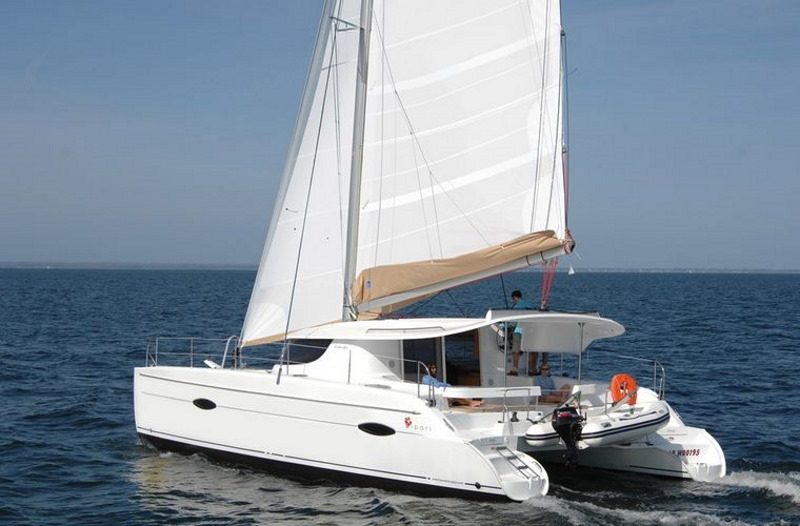
A very successful model for Fountaine Pajot in terms of sales, the Lipari 41 hit the sweet spot in many ways. Another great evolution of their 40 foot catamaran from the French manufacturer. Built with Divinycell core above the waterline and solid laminate below. The cored deck was produced with resin-infusion process.
Sanya 57 (2011)
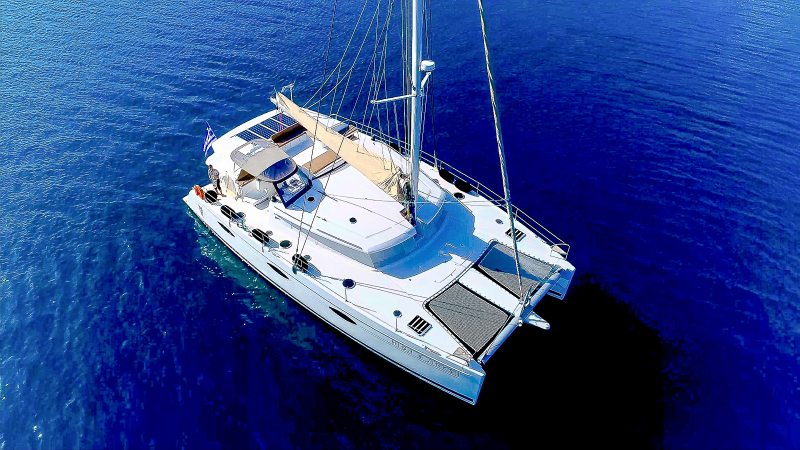
Just like the Galathea 65, the Sanya 57 is a very elegant yacht. This boat replaced the Eletheura 60. The aft deck area is particularly spacious with a popular wet bar. This model came with a shorter charter rig, or a full size performance mast which is almost 4m longer. A very well though out design.
Helia 44 (2012)
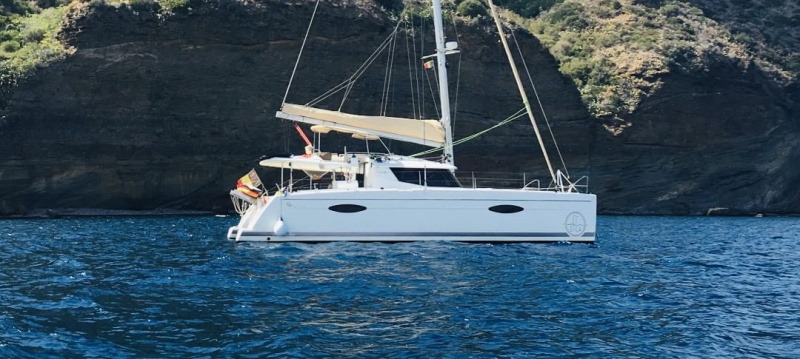
Designed by Berret / Racoupeau and the FP design team, the Helia 44 replaced the Orana 44 in the Fountaine Pajot range. You can access the bulkhead helm station from the aft cockpit or the side deck, and they incorporated a lounge area into the bimini to port of the flybridge. Another great evolution, with the French yard building in incremental improvements.
Victoria 67 (2013)
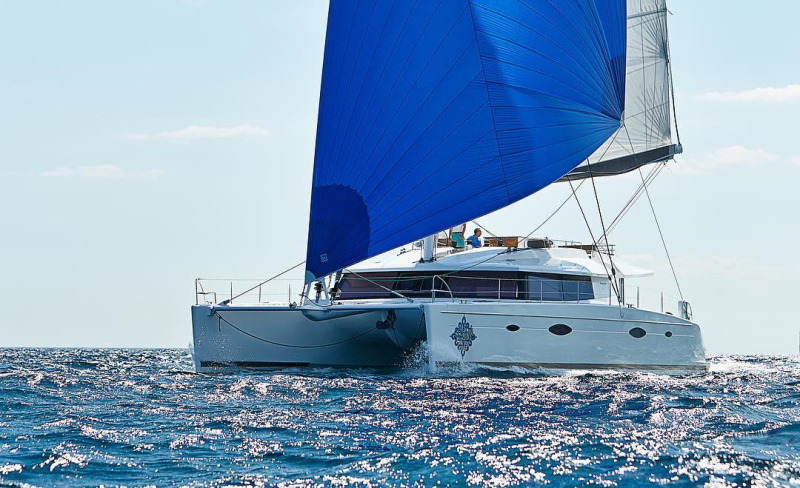
FP moved to a full flybridge with the Victoria 67. She is not as easy on the eye as the Galathea, but you gain a big amount of living space and it’s the place to be when you are under way. Light displacement is 26 tonnes. With her 202 sq. m of sail area, that gives you a respectable SA/D ratio of 23.4
Saba 50 (2014)
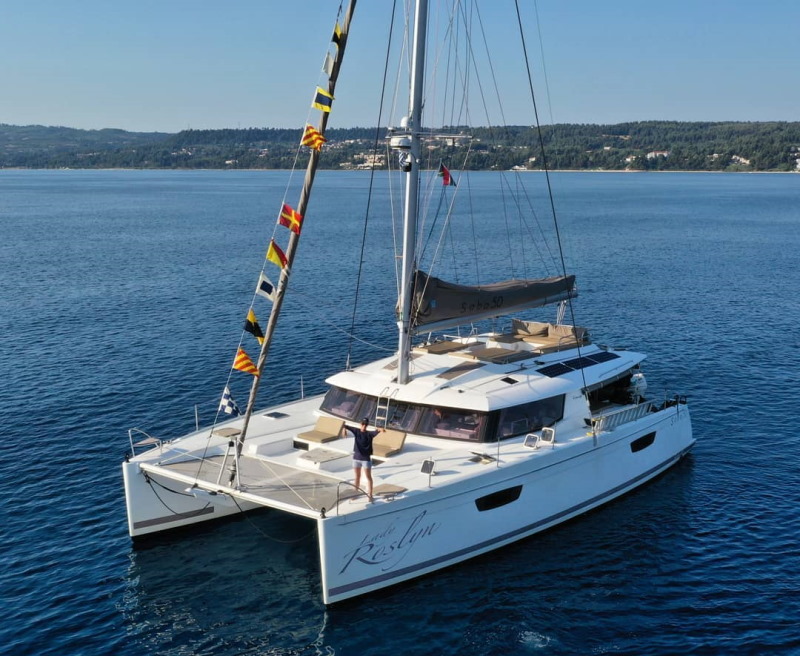
A clever design that feels bigger than her 50 foot, the Saba 50 has multiple zones for different groups to hang out. And she remains easy to handle with a small crew. Head for the bow for sundowners, or chill out on the flybridge or the huge aft cockpit.
Helia 44 Evolution (2016)
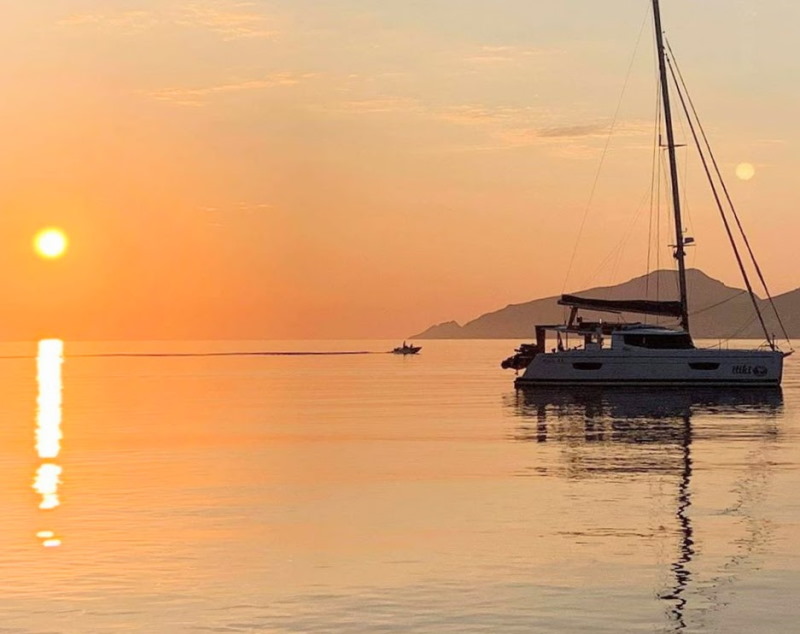
This update of the popular 44 footer has bigger portholes, a redesigned Maestro suite, and more room in the saloon.
Ipanema 58 (2016)
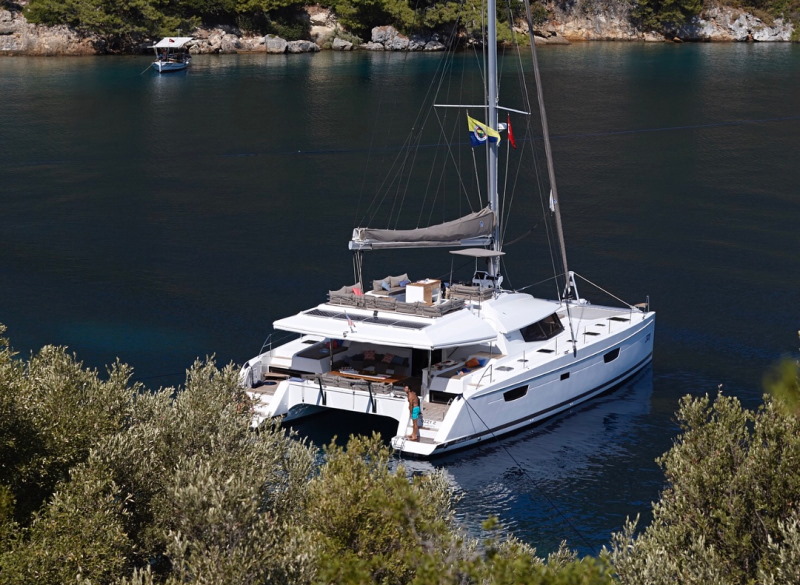
Replaced the Sanya 57, and like the Victoria, they went for the full flybridge which does mean the boom is high (with the mainsail difficult to get to), but it does open up more living space. Constructed with a balsa core above the waterline and solid glass below. All the major components are vacuum infused, using vinylester resin in the hulls for blister resistance.
Lucia 40 (2016)
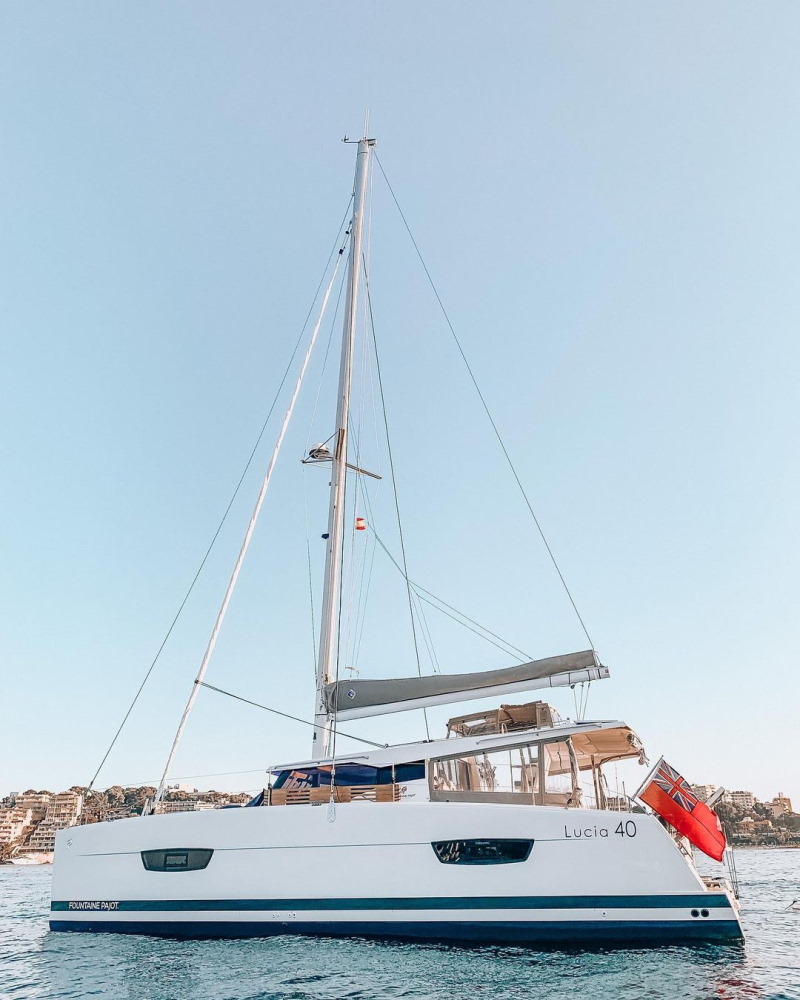
The first of the boxier designs, the Lucia 40 was a top seller for the French yard, probably the leader in her class. Despite the smaller number, she is bigger than her predecessor: Lipari 41 she replaces, with a bigger cockpit, more volume inside and larger windows. Read our full FP Lucia 40 review.
Saona 47 (2017)
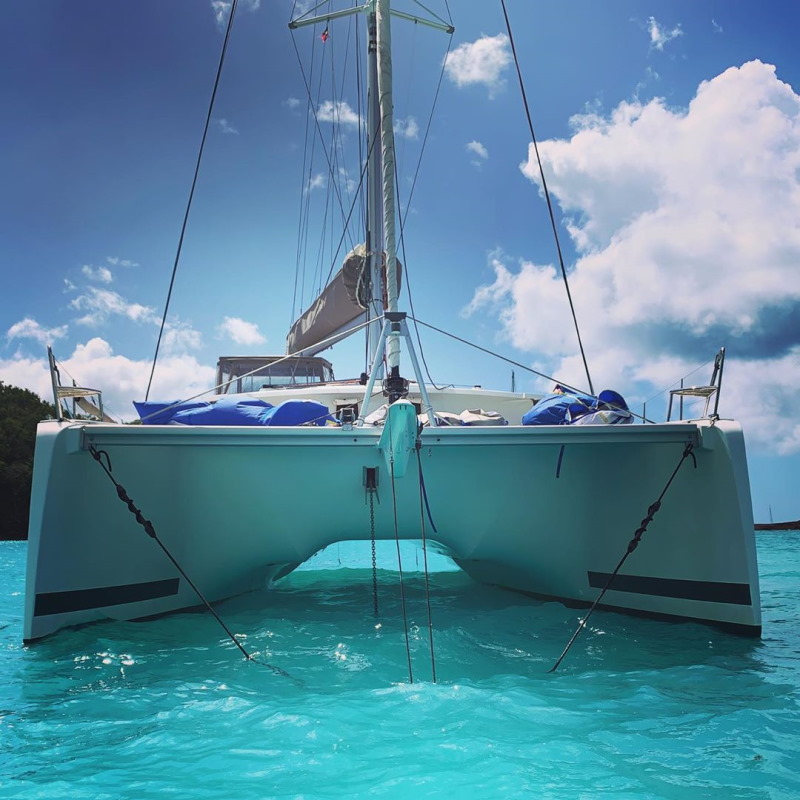
A spacious, nippy cat, the Saona 47 is all about maximising living and entertaining space with an eye on performance achieved through flare at the chines (an old Catana trick). Read our full Saona 47 Review Here.
Astrea 42 (2018)
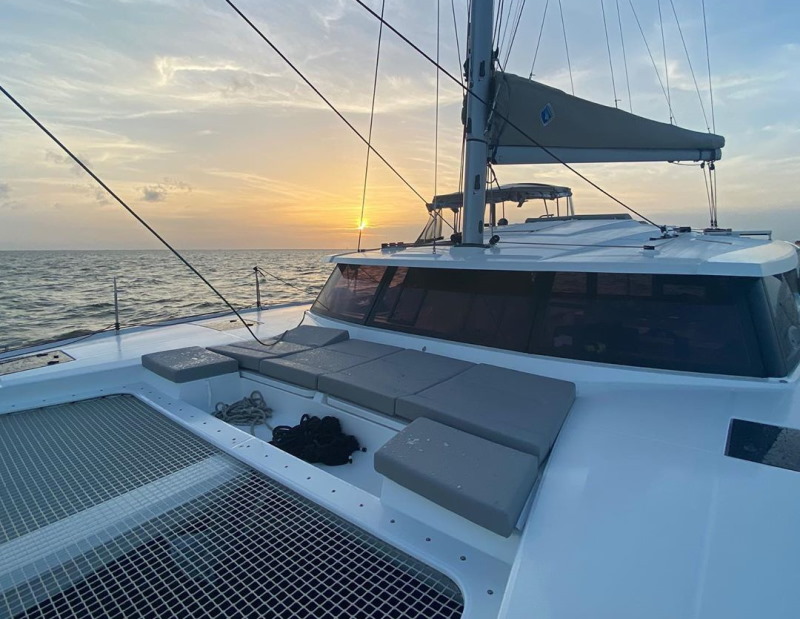
The Astrea 42 borrows a lot of the successful elements of the Saona 47 and fits them cleverly into a smaller package. She’s very light inside with bigger windows and comes with a swimming platform option instead of davits. The elevated helm station that is such a feature of the smaller Fountaine Pajot boats has been perfected here for easy sail handling.
Alegria 67 (2018)
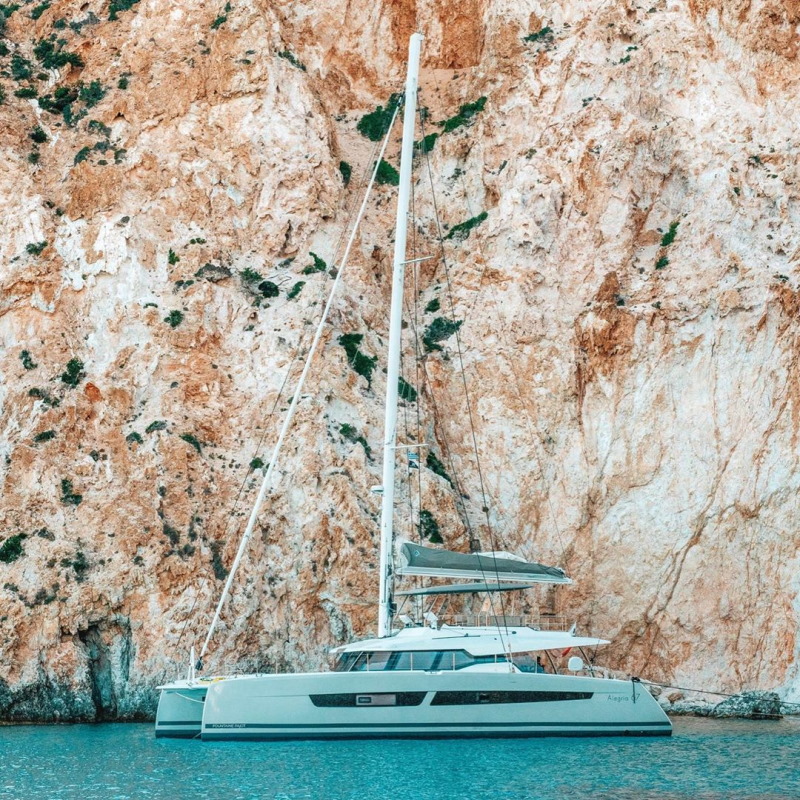
Was the flagship before the Thira 80 was launched.
Elba 45 (2019)
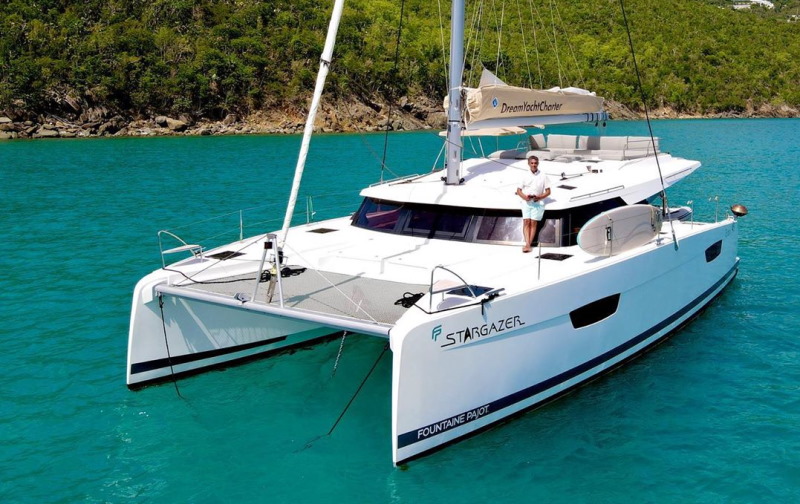
Never before has there been so much choice in the Fountaine Pajot line-up. The Lucia 40, The Astrea 42 and now the Elba 45 which replaces the very popular Helia 44. The hulls have been sculpted to move through the water faster (10% less drag according to the design team Berret-Racoupeau. The other big change is the larger flybridge- or should we say fly-lounge – a neat solution that gives you many of the benefits of a flybridge without raising the boom height too much.
Despite the bulkhead helm, the Elba 45 has lots of space in the aft cockpit with a big day bed tucked behind the helm and a transom bench that spans the width of the boat. This boat has a larger genoa than many of the competition (no self tacker).
Samana 59 (2020)
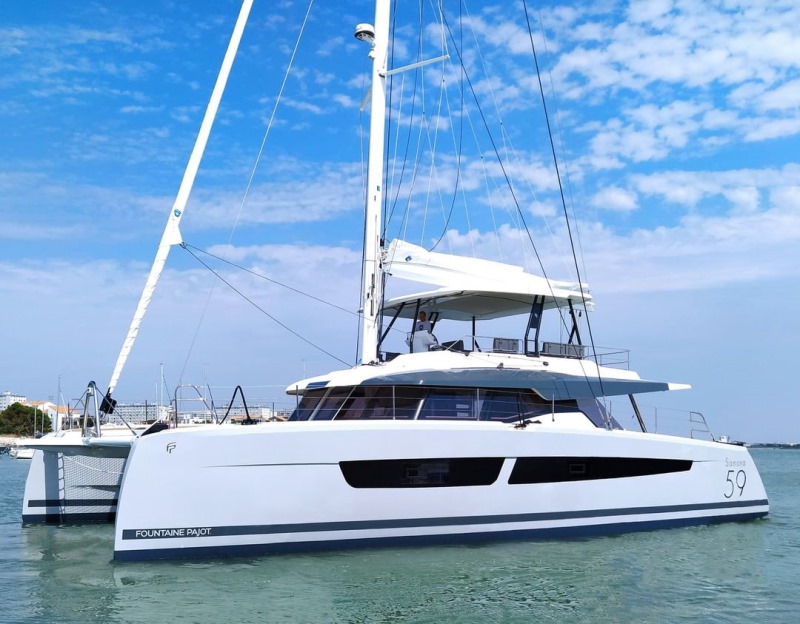
Isla 40 (2020)
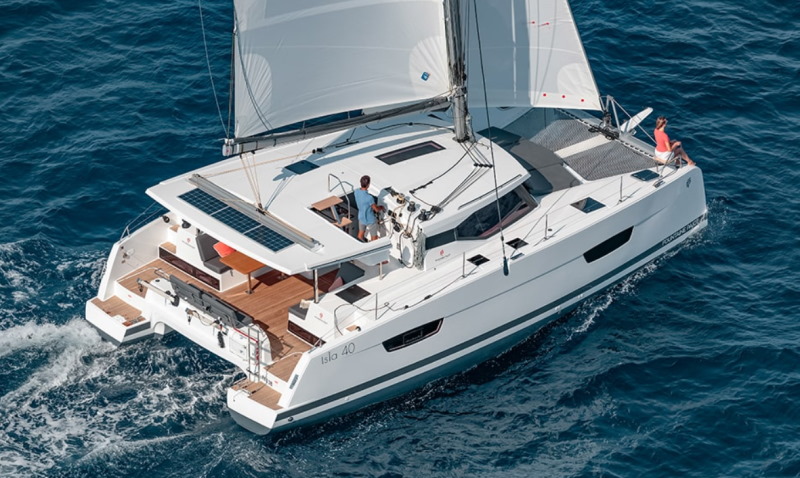
Replaced the Lucia 40
The Tanna 47
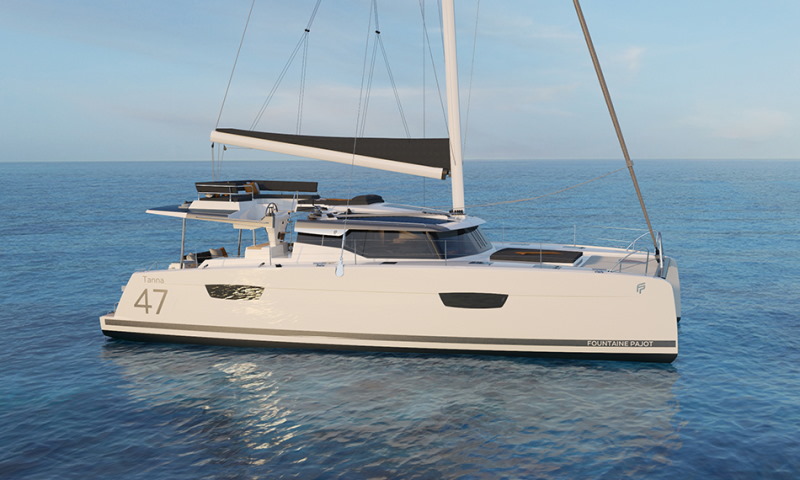
Announced in 2021 is the Fountaine Pajot Tanna 47 which replaces the Saona. The flybridge features a Lounge area that’s twice the size of her predecessor.
Aura 51 (2022)
Replaces the Saba 50 with a sleeker profile.
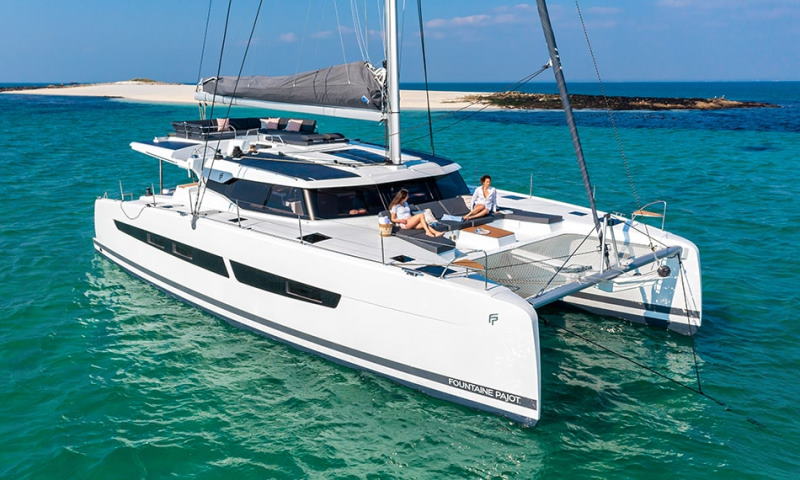
Thira 80 (2023)
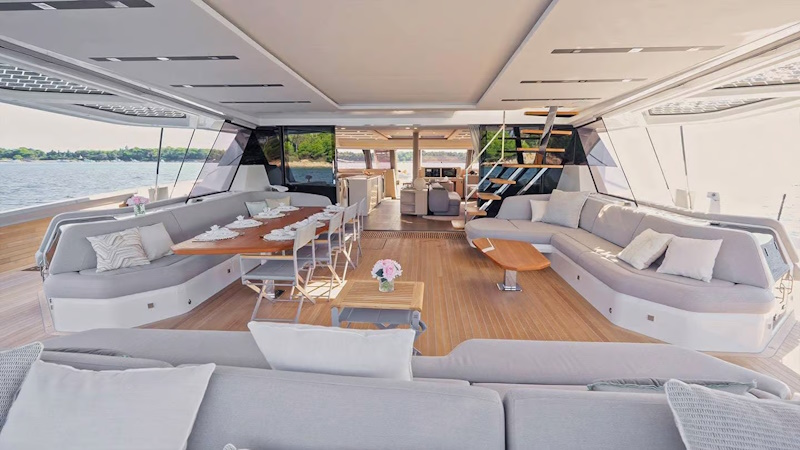
Fountaine Pajot launched the Thíra 80, their new flagship catamaran, at the Cannes Yachting Festival in September 2023.
This 80-foot luxury sailing yacht is the pinnacle of Fountaine Pajot’s design, offering exceptional comfort, elegance, and sailing performance.
Fountaine Pajot New 41
Replacing the Isla 40, the 41 is available with a diesel power or electric drivetrain (hybrid). 11.93m long with a 6.92m beam. With a double helm and manoeuvring station and up to 2000W of peak solar on the coachroof.
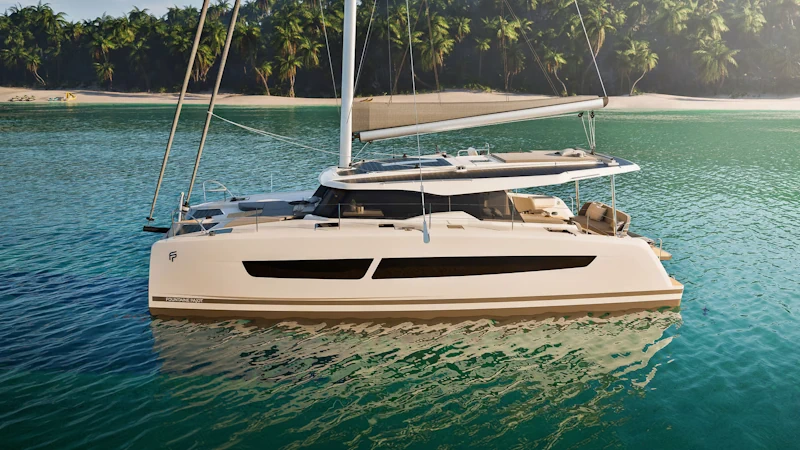
Other Manufacturers
If you enjoyed this history of Fountaine Pajot catamarans, please have a look at these other multihull brand histories in the filters up top.
